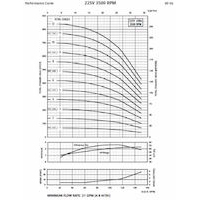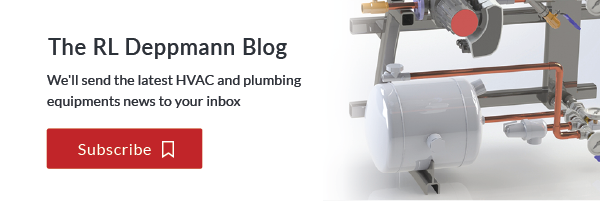Every week a question comes in to R. L. Deppmann
about the minimum flow rate through pumps. In hydronic heating and cooling systems, it is normal to have 2-way valves in the system at the terminal units. As the system temperature is satisfied, the valves close and the flow rate drops from design toward zero flow.
If all of the valves were closed, we would be at “dead-head” pump operation or zero flow rate. In plumbing systems, there are times when there is little or no usage in the building which, again, results in possible zero flow rates through pressure booster pumps. Operating the pump near zero flow may be a disaster waiting to happen for several possible reasons: heat, vibration, discharge recirculation, and suction recirculation. For these reasons, Xylem Bell and Gossett publishes minimum flow rates for pumps.Solution: We know that speed varies proportionally with flow and head varies as the square of the flow. So we use the second affinity law to the variable head: (RPM1/RPM2)2 = Head1/Head2 OR (3500/ RPM2)2 = 100/23SORPM2 = 1678 RPM & Minimum flow = 21 X (1678/3500) = 10 GPM.
Disclaimer: R. L. Deppmann and it’s affiliates can not be held liable for issues caused by use of the information on this page. While the information comes from many years of experience and can be a valuable tool, it may not take into account special circumstances in your system and we therefore can not take responsibility for actions that result from this information. Please feel free to contact us if you do have any questions.


